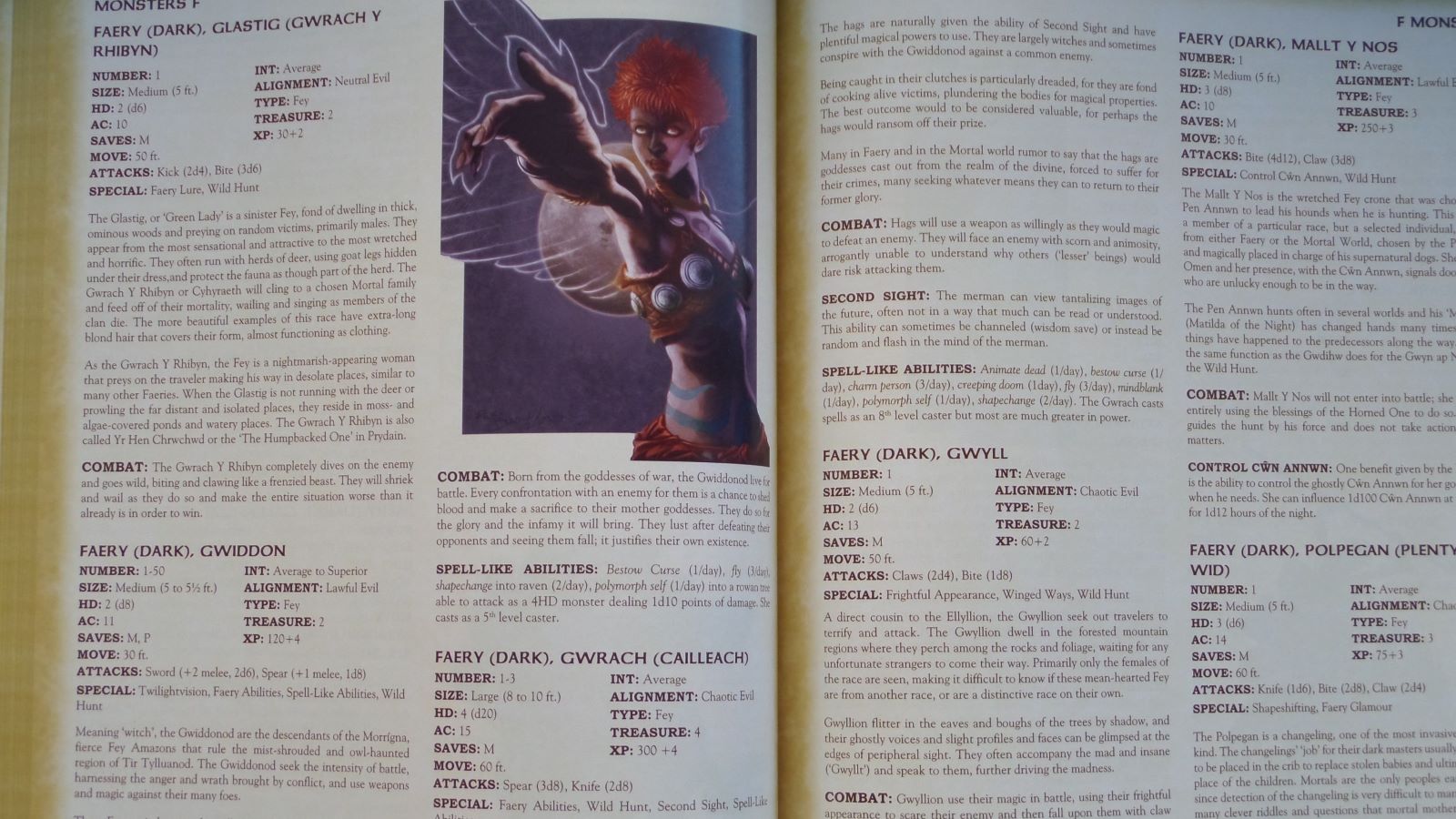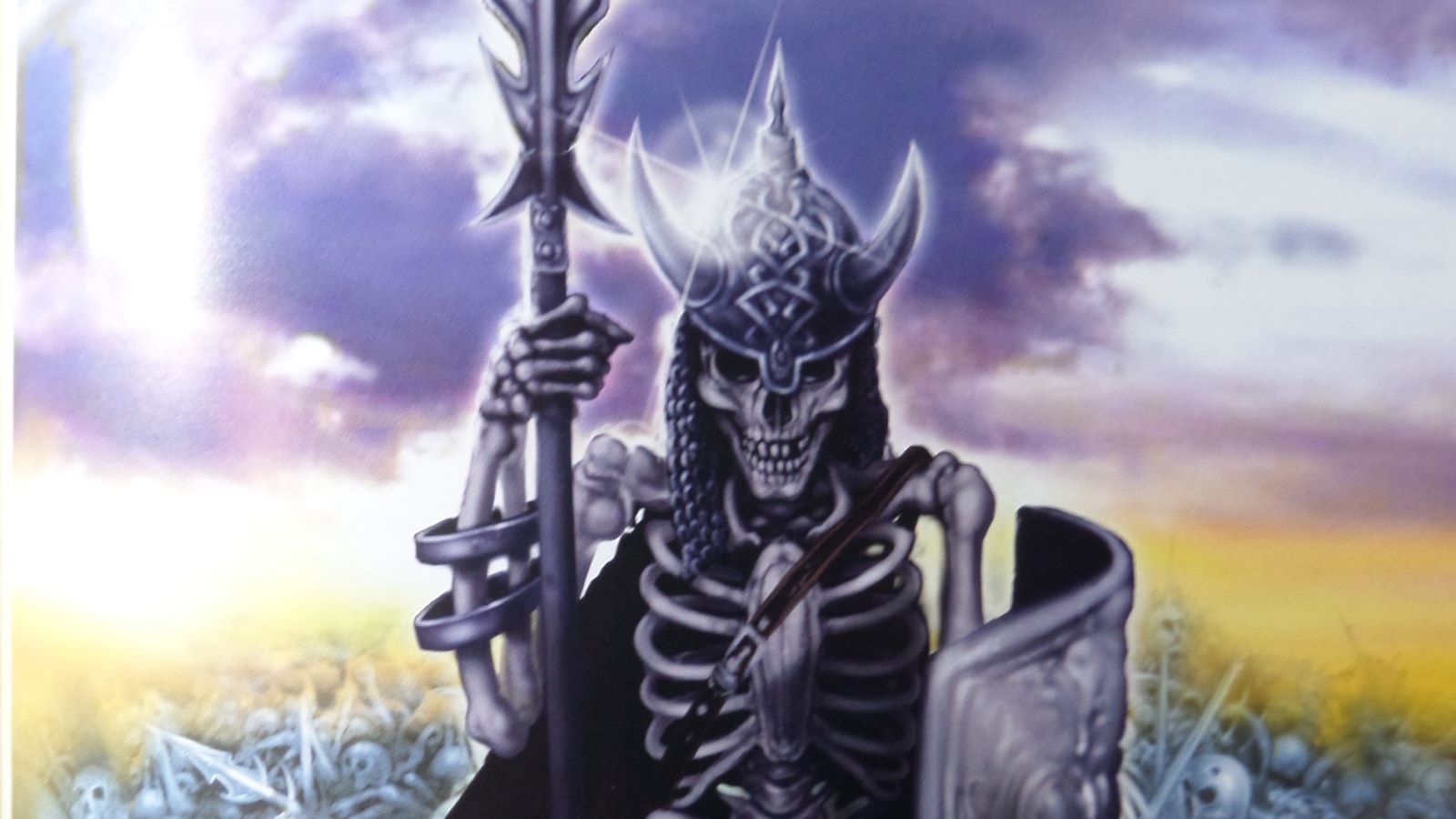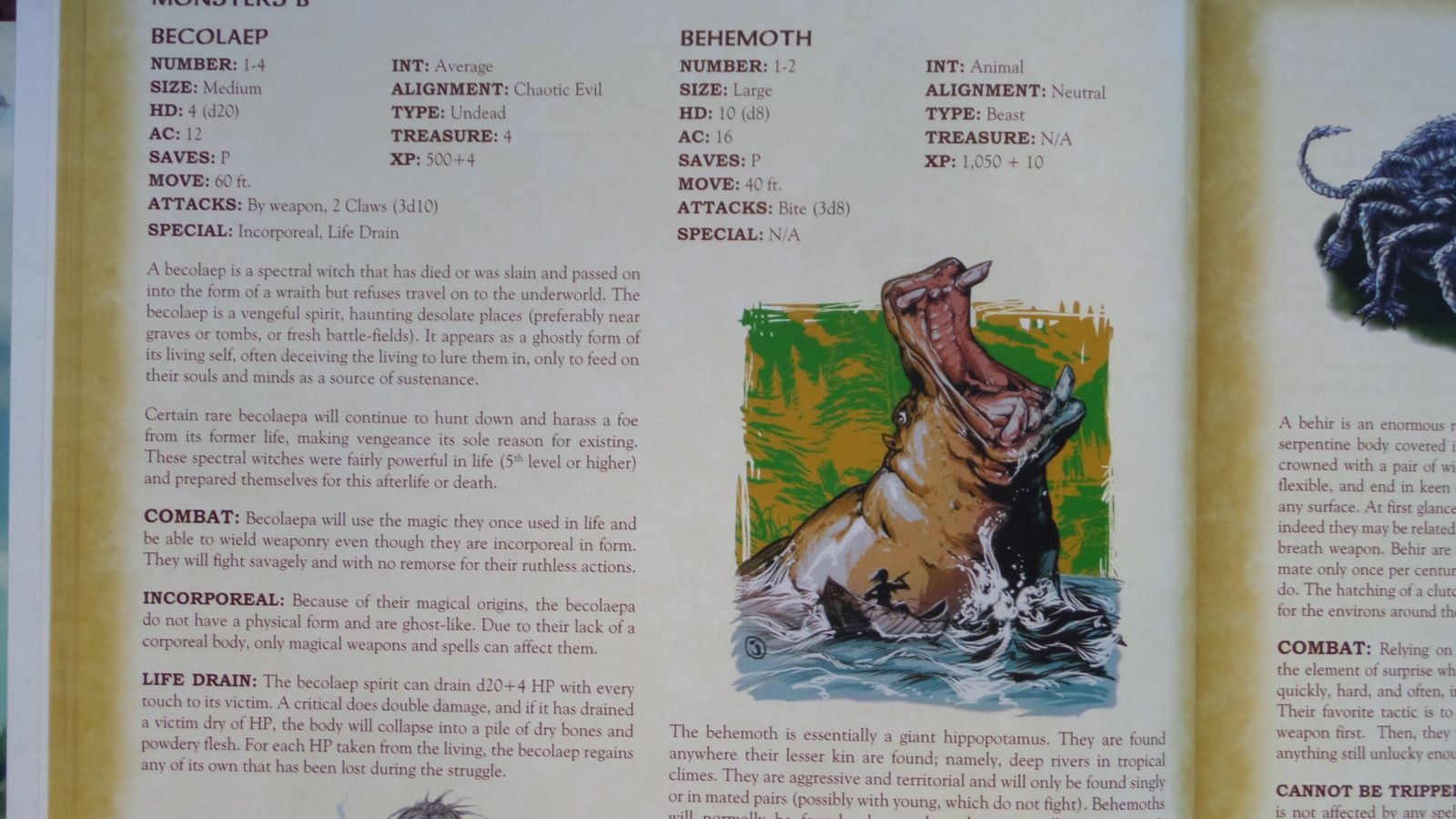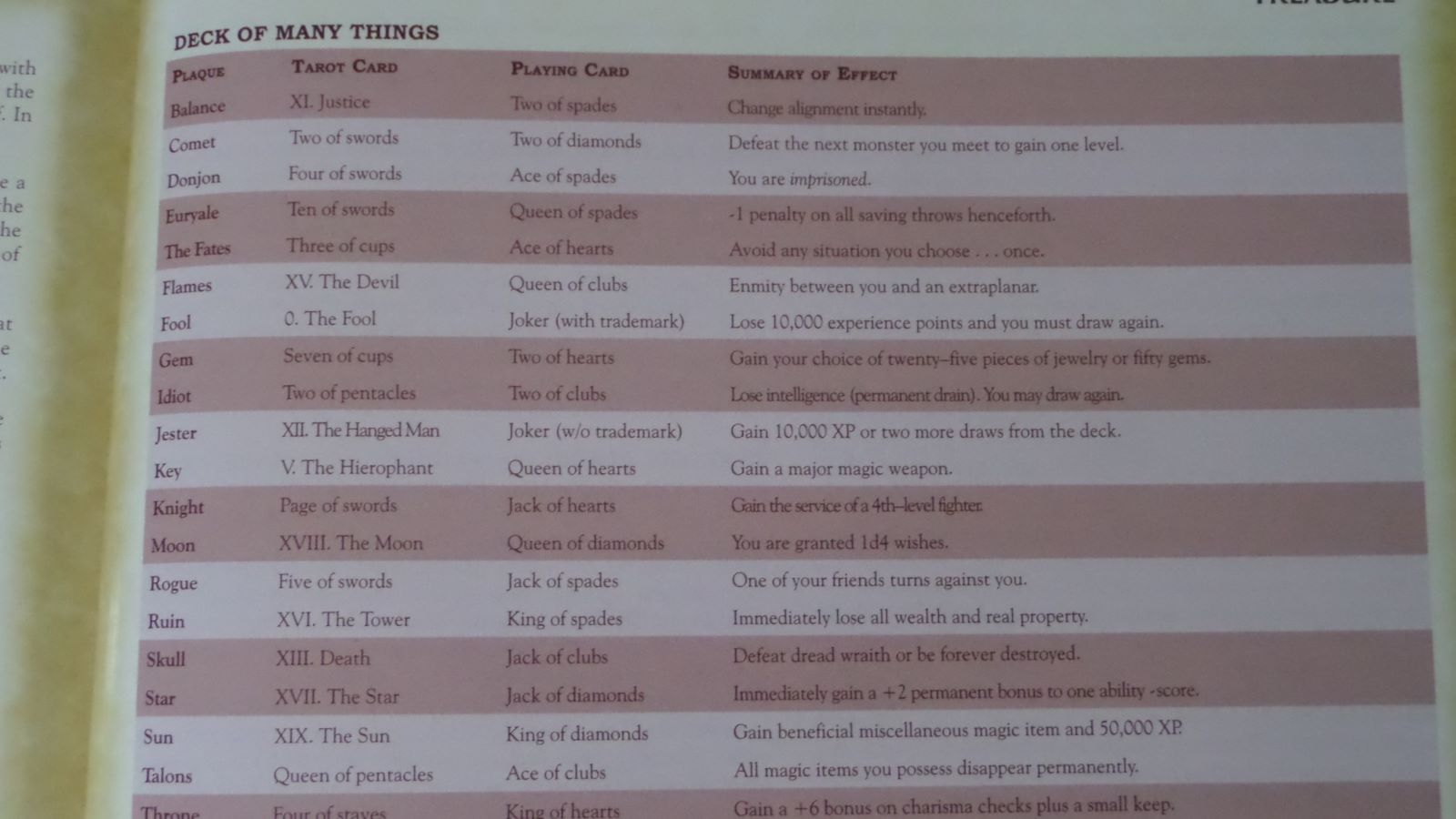
Within the hobby of role playing games these days, there are a lot of monster books. There are also a lot of books loaded with magic items and loot. Rarely are the two combined. It seems a natural fit: here are the monsters, and here is what the monsters have. This pairing was recognized in the earliest days of D&D, and this book bears the name of the original pamphlet from the very first boxed set. Unfortunately, the combination fell by the wayside when the Advanced versions started coming out. Well, Troll Lord Games is here to take us back to our roots.
The stat blocks and creature descriptions eat about 4/5ths of the book, so we’ll start with the monsters. Castles & Crusades shares a lot of DNA with earlier versions of D&D, so I was concerned the book would just be a re-imagining of familiar foes. To some extent, this is almost required. After all, what kind of fantasy game doesn’t have orcs, trolls, and dragons?
So obviously a lot of familiar faces had to show up. About half of the 400ish monsters are of the more “common” varieties, a reappearance of monsters as they were in the early days of the hobby. That means statblocks and descriptions that are comparable to various published D&D versions. It also means that C&Cs black dragons breathe acid, the silver dragons shapeshift, and the trolls regenerate; all as is now standard within D&D related games.

An entire encounter could be built around proper pronunciation.
Fortunately, the designers didn’t stop there. European folklore has always contributed creatures to a book like this, but there are some deep dives into regional monsters that are not commonly known. Fairies and fey beasts are given an exceptional amount of attention in their own sections. It’s a level of detail normally reserved for a specific campaign, presented here for general use. There are also a few wholly original creatures like the mennotal, as well some inventive takes on more familiar ones like genie-summoning brass dragons.
You can’t discuss a monster book without talking about the art. The cover is clearly an homage to the original Monster Manual from 1977, done in a more modern style. The interior art focuses on the creatures, with smaller portraits placed around different areas. Not every creature gets artwork, but it’s rare to go more than a page or two without something. The highlights are the occasional full page pieces, several of which I’d be happy to hang on my wall.

Mistaking a skeletal warrior for a normal skeleton can be fatal.
While the monster section overall is good, it’s far from perfect. The structure is a particular weak point. The monsters are mostly alphabetical, but this doesn’t entirely hold true. Some monsters – giants, dragons, and lycanthropes for example – have several entries within their category, but these sections begin and end with no real indicators. And of course there are dragons and giants that aren’t grouped with the others. The fey are given a somewhat more formal grouping, with about 30 pages in a row of various types. It works well, but, like the previous examples, there’s about a dozen or more that aren’t with the others.
Another issue is with the editing in general. Sometimes, information in the stat block will be contradicted by the description, or described attacks won’t appear in the statblock. Some creatures have abilities that have been copied and pasted to another creature without updating the names. Others seem to be variant creatures from another source, copied back into this book, causing monsters that may have similar names, identical stat blocks, and wildly different descriptions that reference setting specific information. In some cases they even direct the reader to sections that don’t exist or aren’t readily apparent.
Castle Keepers should also be aware of just how variable things sometimes are with this book. The type of die on the hit die used seems to be whatever the creator wanted. There are small creatures with big hit dice, and big creatures with smaller hit dice, and even a few that use d20s. Damage has similar variance, with some creatures that deal multiple d10s or even d20s on a single hit. Level and ability score draining abilities are not that rare, and “save or perish” shows up several times as well. The monster’s hit die level and awarded XP rarely give a good picture of how a fight might go. These aren’t necessarily a bad thing; this is a game with an old school mindset and randomness is a big part of the playstyle. Still, Castle Keepers who aren’t mindful could easily wipe out a party by picking one wrong monster or getting a string of high rolls, or bore them with the same encounter if the dice go another way.

The Becolaep has between 4 and 80 hit points, and deals between 8 and 54 damage per hit.
The treasure section starts off with tips for the CK on how to generate rewards for the players. This not only includes treasure tables, but also rules for magic item creation and alternative rewards such as lands, titles, and services. That section is very important to higher levels of play as several classes have specific abilities around managing properties.
Moving on to the items themselves, we see a similar trend as from the monsters section. A good number of these will be familiar to anyone who’s played nearly any edition of D&D, and, as with the monsters, some of this is effectively a requirement. Things like the Cloak of Elvenkind and Gauntlets of Ogre Power are iconic, and if the game didn’t officially have Bags of Holding or Handy Haversacks, every CK would have to add them due to player demand.
While not huge on page count, there are a lot of items here, numbering well into the hundreds in total. Most of the items are D&D staples and if you’re a veteran of that game, you’ll probably recognize a lot here. These items are tried and tested and, as mentioned earlier, often iconic. Still, a bit more original or at least rarer content would have been nice.

Changing systems will not save you from the Deck of Many Things.
What is original (to me at least) is often quite interesting. There are a handful of items based on real world legends or religions stretching from Iceland to Japan. They’ve been given mechanics to function in game but do not hide their real world influences. This was common in the early days of the hobby, but it seems most fantasy RPGs today want to fit things into their internal fiction. In the process, some of the weirdness and fun that real world lore contains has been lost. Not so with these, they do exactly what is described in myth.
Overall, this is a solid book. It does get bogged down by the editing and layout issues, but those are more of an annoyance than an issue of the content itself. There’s enough of the familiar to meet the expectations of the genre, and enough of the new to spark the imagination. The section on fairies is a particular highlight, with several dozen I’ve not heard of before, causing visions of a fey based campaign in my future.
Castles & Crusades Monsters & Treasure
Great
Monsters & Treasure might be considered optional, but it’s unlikely any Castle Keeper will regret having it. Provides a good mix of the traditional fantasy foes with some new faces, but is held back by some editing misses and haphazard organization.
Pros
- Plenty of creature variety for any level or encounter type
- Considerably more original monsters than expected
- Treasure charts in the same book as the monsters works very well
Cons
- Monsters aren’t well organized, with no appendices to help
- Editing issues in stat blocks and descriptions
- Most of the magic items aren’t really changed from their D&D version
